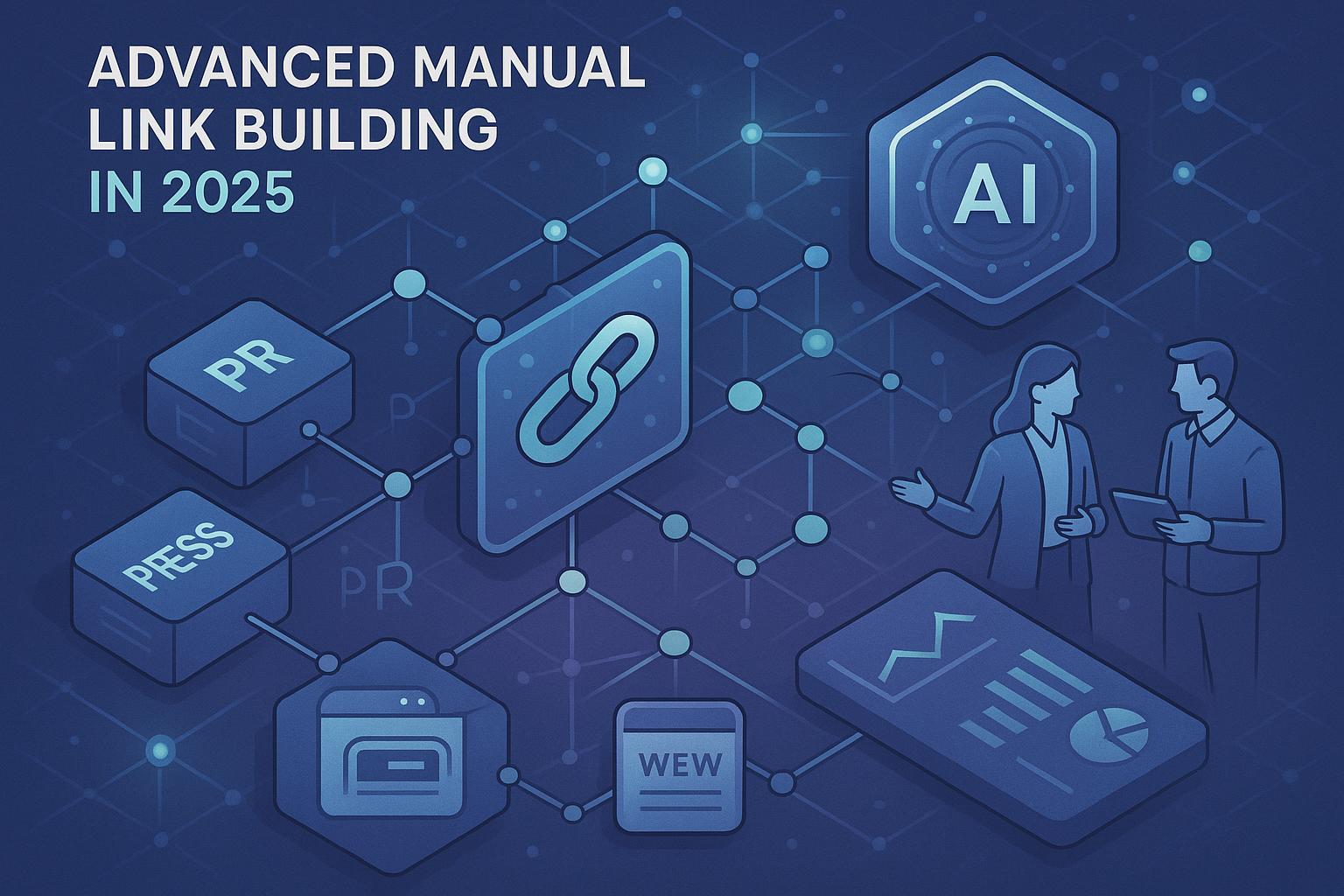The Evolving Landscape of Manual Link Building: Strategies for 2025

Introduction: Why Manual Link Building Demands Radical Rethinking in 2025
Manual link building has always represented the gold standard of SEO authority, but as we enter 2025, the landscape is shifting faster than ever. Search engine algorithms grow increasingly sophisticated, easy-win tactics are scarce, and compliance standards demand more than simple outreach. For SEO specialists, content marketers, and digital PR teams, the question is no longer "Should we do manual link building?" but rather: How do we execute it in a way that's future-proof, effective, and penalty-safe—especially as automation and AI reshape every facet of the process?
Recent data shows that sectors relying heavily on sustained, editorially earned backlinks see organic traffic increases from 100% to 6,000% over 12–24 month campaigns (Linkbuilder.io). Yet, 2025’s winners leverage hybrid approaches, double down on relationship building, and de-risk campaigns with advanced technology and smarter strategies. This playbook delivers the evidence-based best practices that matter most right now—plus the expert frameworks missing from the majority of generic competitor advice.
2025 Manual Link Building Best Practices: Advanced, Actionable, and Battle-Tested
1. Orchestrate Hybrid AI + Manual Outreach Campaigns
What/Why: Success now hinges on fusing AI-powered prospecting with hands-on human relationship building. AI improves efficiency in target discovery and personalization; manual effort secures trust and editorial acceptance (Coalition Technologies).
How:
- Use tools like BuzzStream, Insert.Link, and Postaga for AI-assisted prospecting, quality scoring, and automated follow-ups (Editorial.Link).
- Have human strategists craft personalization and follow up on the most promising leads.
- Integrate predictive analytics to identify high-value targets and forewarn compliance risks.
- Review campaign performance weekly, refining both AI and manual components.
Effect: Studies show AI hybrid outreach increases successful link acquisition by 35–50%, while maintaining quality and reducing manual workload (Loopex Digital).
2. Prioritize Entity-Relevant and Authoritative Links Over Volume
What/Why: In Google’s E-E-A-T (Experience, Expertise, Authoritativeness, Trustworthiness) era, entity-based and highly contextual links vastly outperform "generic" backlinks for lasting rankings.
How:
- Map your entity attributes and align outreach to sites with clear topical and authority overlap.
- Vet prospects with tools like Ahrefs Brand Radar (for competitor link mapping) and SEMrush (for topic authority scores).
- Develop relationships with editors and thought leaders in your sector through personalized, value-first pitches and mutual PR opportunities.
Effect: 85% of top-ranking pages have at least one editorial, topical backlink (Ahrefs 2024).
3. Integrate Digital PR and Newsworthy Outreach
What/Why: Editorial placements from authentic news, industry stories, and data-driven content are the new backbone of scalable, manual link building.
How:
- Launch digital PR campaigns supporting new research, unique data, or expert commentary.
- Use platforms like HARO for journalist link opportunities.
- Track journalist/PR engagement and segment follow-ups via CRM.
- Recycle proven news angles across different regions or industry verticals.
Effect: Campaigns focused on data/news content average 18% higher link quality and result in better long-term authority compared to outreach-only efforts (Growth Partners Online).
4. Customize Multichannel Outreach for Each Prospect
What/Why: Cold emails alone are no longer effective. The best campaigns meet contacts where they are—mixing email, social DMs, video, and professional networking.
How:
- Research prospect communication preferences (Twitter, LinkedIn, forums, etc.).
- Engage initially via value-driven interactions (public comments, social shares).
- Deliver personalized outreach with context—"saw your recent op-ed on ___, loved your point on ___, here’s why our data might add to the discussion."
- Use simple video messages or tailored content samples when pitching journalists or influencers.
Effect: Multichannel outreach increases response rates by 20–40% versus email-only, and drives more authentic relationship-building (Editorial.Link).
5. Implement Rigorous Link Quality and Risk Audits
What/Why: With Google and Bing accelerating detection of manipulative links, proactive risk management is your insurance policy against penalties or devaluation.
How:
- Score potential links by authority, topicality, editorial standards, and spam metrics (using Ahrefs, Moz, SEMrush).
- Create an internal “toxicity” checklist—reject any sources with high outbound link ratios, irrelevant anchors, or recent deindexing trends.
- Regularly audit your link profile for anomalies or negative SEO, and act fast on recoveries.
Effect: Campaigns with quarterly risk audits report <3% penalty/reconsideration rates vs. industry averages over 7% (Mailshake).
6. Leverage Niche- and Compliance-Specific Playbooks (YMYL, SaaS, Local, etc.)
What/Why: Sectors like YMYL (Your Money, Your Life), SaaS, or highly-regulated industries face unique outreach and compliance hurdles. Generic approaches underperform and risk real business damage.
How:
- Build tailored prospect lists by regulatory/industry overlay.
- Personalize outreach language and offer value specifically relevant to decision-makers in those niches.
- Track sector-specific compliance (GDPR, CCPA, US spam laws) within your outreach workflow.
Effect: Campaigns using niche playbooks have 2x higher approval rates and substantially lower compliance risk (Linkbuilder.io).
7. Attribute, Measure, and Iterate with Meaningful Campaign Metrics
What/Why: Manual link building can be expensive and resource-intensive. Without ROI measurement and attribution, program value is unclear. The best teams use granular tracking of impact, not just counting links.
How:
- Use dedicated CRM/outreach platforms to log contact, pitch, and placement status.
- Monitor organic traffic, SERP improvements, and direct referral metrics for pages targeted by link campaigns.
- Visualize campaign data with before/after analytics snapshots and reporting dashboards.
Effect: Companies tracking both qualitative (relationship/narrative) and quantitative (links, rankings, traffic) outcomes consistently outperform those tracking only output volume (Backlinko).
Summary & Next Steps: Elevate, Adapt, and Future-Proof Your Link Building
The 2025 playbook for manual link building is about smarter orchestration, entity relevance, digital PR, authentic multichannel outreach, and unwavering risk management. Teams who combine these actionable best practices with a relentless focus on both creativity and compliance will not only weather future algorithm shifts—they’ll dominate competitive verticals and build lasting SEO authority.
To deepen your strategy or audit your workflow, explore further:
- Comprehensive Link Building Checklist (The Links Guy)
- AI Link Building Tools & Workflows
- Latest Outreach & Risk Compliance Insights
Practice what works, abandon yesterday’s tricks, and lead your market sharper than ever before.
References:

